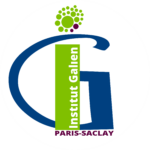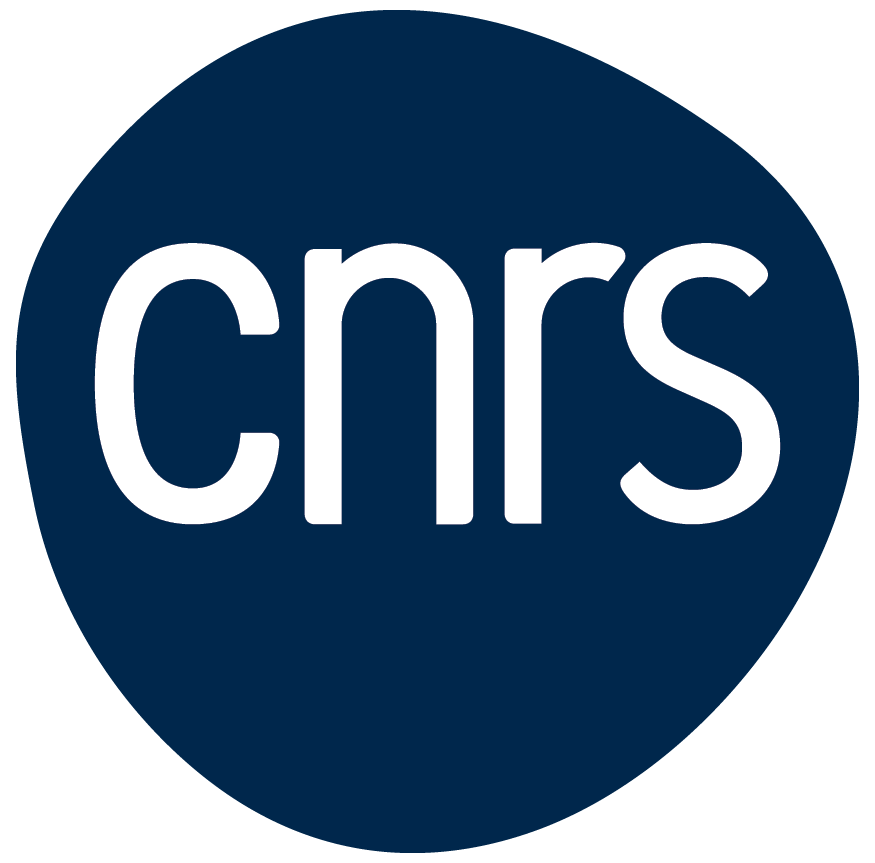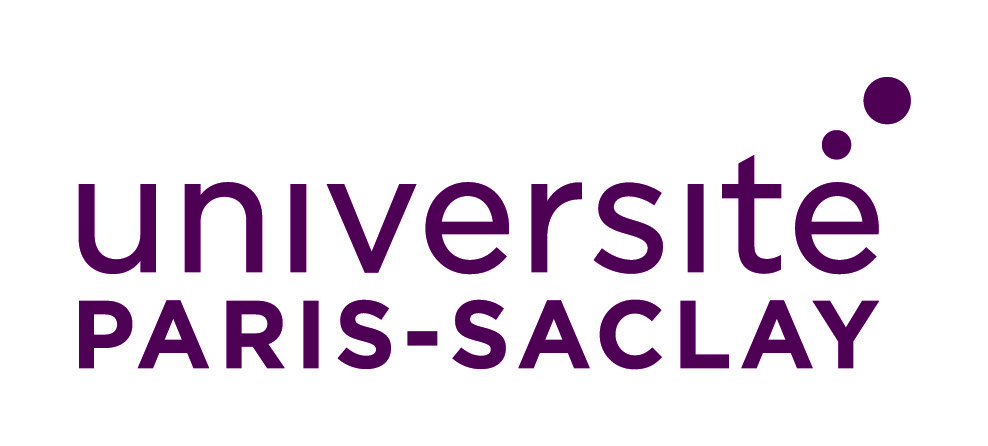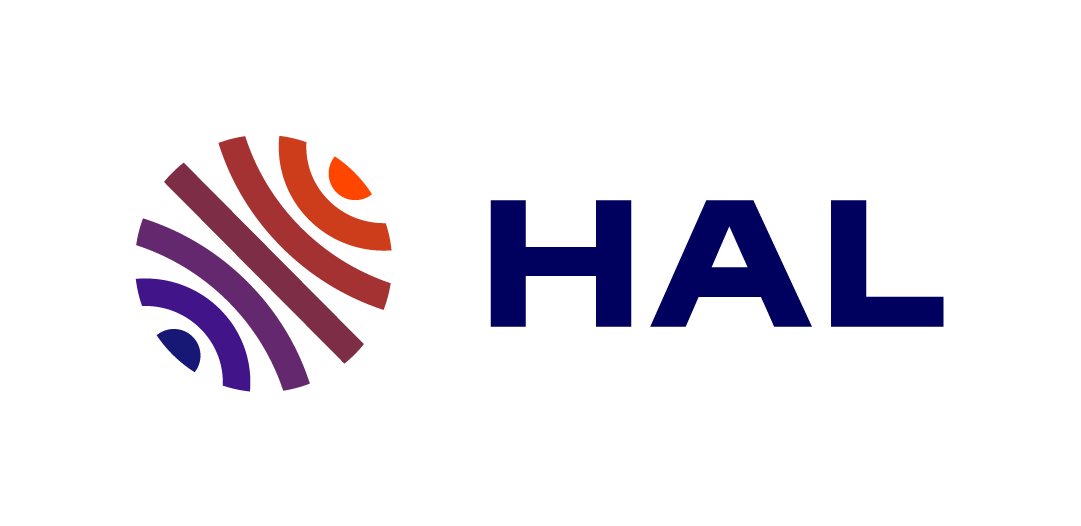Annuaire du laboratoire :

Informations
CV
![]() Juliette Vergnaud-Gauduchon a obtenu son diplôme d’Etat de Docteur en Pharmacie en 2002 et son doctorat en 2005 à l’université de Caen-Basse-Normandie (sous la direction du Dr. Brigitte Sola). Elle a obtenu son habilitation à diriger des recherches (HDR) en 2017. En 2006, Juliette Vergnaud-Gauduchon est recrutée à l’Université d’Auvergne-Faculté de Pharmacie (Clermont-Ferrand) dans le laboratoire de M-P Vasson (Biochimie, Biologie Moléculaire et Nutrition). Ses travaux de recherche portaient sur les fonctions des cellules immunitaires au cours d’une intervention nutritionnelle. En 2010, elle a rejoint l’UMR 8612 (Institut Galien Paris-Sud, Université Paris-Sud) dans le groupe de Gillian Barratt et en 2015, elle a rejoint l’équipe Elias Fattal. Son projet principal vise à cibler les cellules cancéreuses aux niveaux cellulaire et subcellulaire à l’aide de liposomes encapsulant des inhibiteurs des protéines de la famille Hsp90 (en particulier les isoformes cytosoliques et mitochondriale). Elle est auteur et co-auteur de 30 publications (articles originaux, critiques et chapitres de livre).
Juliette Vergnaud-Gauduchon a obtenu son diplôme d’Etat de Docteur en Pharmacie en 2002 et son doctorat en 2005 à l’université de Caen-Basse-Normandie (sous la direction du Dr. Brigitte Sola). Elle a obtenu son habilitation à diriger des recherches (HDR) en 2017. En 2006, Juliette Vergnaud-Gauduchon est recrutée à l’Université d’Auvergne-Faculté de Pharmacie (Clermont-Ferrand) dans le laboratoire de M-P Vasson (Biochimie, Biologie Moléculaire et Nutrition). Ses travaux de recherche portaient sur les fonctions des cellules immunitaires au cours d’une intervention nutritionnelle. En 2010, elle a rejoint l’UMR 8612 (Institut Galien Paris-Sud, Université Paris-Sud) dans le groupe de Gillian Barratt et en 2015, elle a rejoint l’équipe Elias Fattal. Son projet principal vise à cibler les cellules cancéreuses aux niveaux cellulaire et subcellulaire à l’aide de liposomes encapsulant des inhibiteurs des protéines de la famille Hsp90 (en particulier les isoformes cytosoliques et mitochondriale). Elle est auteur et co-auteur de 30 publications (articles originaux, critiques et chapitres de livre).
![]() Juliette Vergnaud-Gauduchon obtained her PharmD diploma (Diplôme d’état de Docteur en Pharmacie) in 2002 and her PhD in 2005 at Université de Caen-Basse-Normandie (Dr. Brigitte Sola’s Lab). She obtained her Habilitation à diriger des recherches (HDR) in 2017. In 2006, Juliette Vergnaud-Gauduchon was recruited at Université d’Auvergne-faculté de Pharmacie (Clermont-Ferrand) in the M-P Vasson’s lab (Biochimie, Biologie Moléculaire et Nutrition). Her research work focused on the immune cell functions during nutritional intervention. In 2010, she joined UMR 8612 in the Gillian Barratt’s group and in 2015 joined the Elias Fattal’s team. Her main project aims to target cancer cells at the cellular and subcellular levels using liposomes encapsulating inhibitors of Hsp90 family proteins. She is the author (and co-author) of 30 publications (original papers, reviews and book chapters).
Juliette Vergnaud-Gauduchon obtained her PharmD diploma (Diplôme d’état de Docteur en Pharmacie) in 2002 and her PhD in 2005 at Université de Caen-Basse-Normandie (Dr. Brigitte Sola’s Lab). She obtained her Habilitation à diriger des recherches (HDR) in 2017. In 2006, Juliette Vergnaud-Gauduchon was recruited at Université d’Auvergne-faculté de Pharmacie (Clermont-Ferrand) in the M-P Vasson’s lab (Biochimie, Biologie Moléculaire et Nutrition). Her research work focused on the immune cell functions during nutritional intervention. In 2010, she joined UMR 8612 in the Gillian Barratt’s group and in 2015 joined the Elias Fattal’s team. Her main project aims to target cancer cells at the cellular and subcellular levels using liposomes encapsulating inhibitors of Hsp90 family proteins. She is the author (and co-author) of 30 publications (original papers, reviews and book chapters).
Mots clés
![]() Cancer, biologie cellulaire, mécanismes d’action des inhibiteurs d’Hsp90, évaluation biologique des nanovecteurs
Cancer, biologie cellulaire, mécanismes d’action des inhibiteurs d’Hsp90, évaluation biologique des nanovecteurs
![]() Cancer, cell biology, Hsp90 inhibitors’ mechanisms of action, biological evaluation of nanovectors
Cancer, cell biology, Hsp90 inhibitors’ mechanisms of action, biological evaluation of nanovectors
10 publications majeures
- Sauvage F, Fattal E, Al-Shaer W, Denis S, Brotin E, Denoyelle C, Blanc-Fournier C, Toussaint B, Messaoudi S, Alami M, Barratt G, Vergnaud-Gauduchon J. Antitumor activity of nanoliposomes encapsulating the novobiocin analog 6BrCaQ in a triple-negative breast cancer model in mice. Cancer Lett. 2018, 432:103–111.
- Alshaer W, Hillaireau H, Vergnaud J, Mura S, Deloménie C, Sauvage F, Ismail S, Fattal E. Aptamer-guided siRNA-loaded nanomedicines for systemic gene silencing in CD-44 expressing murine triple-negative breast cancer model. J. Control. Release 2018, 271:98–106.
- Sauvage F, Messaoudi S, Fattal E., Barratt G, Vergnaud-Gauduchon J. Heat shock proteins and cancer: How can nanomedicine be harnessed? J. Control. Release 2017, 248:133–143.
- Grabowski N., Hillaireau H., Vergnaud-Gauduchon J., Nicolas V., Tsapis N., Kerdine-Römer S., Fattal E., Surface-Modified Biodegradable Nanoparticles’ Impact on Cytotoxicity and Inflammation Response on a Co-Culture of Lung Epithelial Cells and Human-Like Macrophages, J. Biomed. Nanotechnol. 2016, 12:135–146.
- Sauvage F, Franzè S, Bruneau A, Alami M, Denis S, Nicolas V, Lesieur S, Legrand FX, Barratt G, Messaoudi S, Vergnaud-Gauduchon J. Formulation and in vitro efficacy of liposomes containing the Hsp90 inhibitor 6BrCaQ in prostate cancer cells. Int J Pharm. 2016, 499:101-109.
- Grabowski N, Hillaireau H, Vergnaud J, Tsapis N, Pallardy M, Kerdine-Römer S, Fattal E. Surface coating mediates the toxicity of polymeric nanoparticles towards human-like macrophages. Int J Pharm. 2015, 482:75-83.
- Alshaer W, Hillaireau H, Vergnaud J, Ismail S, Fattal E. Functionalizing Liposomes with anti-CD44 Aptamer for Selective Targeting of Cancer Cells. Bioconjug Chem. 2015, 26:1307-13.
- Gauduchon J, Seguin A, Marsaud V, Clay D, Renoir JM, Sola B. Pure antiestrogen-induced G1-arrest in myeloma cells results from the reduced kinase activity of cyclin D3/CDK6 complexes whereas apoptosis is mediated by endoplasmic reticulum-dependent caspases. Int J Cancer. 2008, 122:2130-41.
- Maillard S, Gauduchon J, Marsaud V, Gouilleux F, Connault E, Opolon P, Fattal E, Sola B, Renoir JM. Improved antitumoral properties of pure antiestrogen RU 58668-loaded liposomes in multiple myeloma. J Steroid Biochem Mol Biol. 2006, 100:67-78.
- Maillard S, Ameller T, Gauduchon J, Gougelet A, Gouilleux F, Legrand P, Marsaud V, Fattal E, Sola B, Renoir JM. Innovative drug delivery nanosystems improve the anti-tumor activity in vitro and in vivo of anti-estrogens in human breast cancer and multiple myeloma. J Steroid Biochem Mol Biol. 2005, 94:111-21.
- Gauduchon J, Gouilleux F, Maillard S, Marsaud V, Renoir JM, Sola B. 4-Hydroxytamoxifen inhibits proliferation of multiple myeloma cells in vitro through down-regulation of c-Myc, up-regulation of p27Kip1, and modulation of Bcl-2 family members. Clin Cancer Res. 2005, 15:2345-54.
- Giuseppe Francesco Racaniello, Valentino Laquintana, Juliette Vergnaud, Angela Lopedota, Annalisa Cutrignelli, et al.. Development of purified glycogen derivatives as siRNA nanovectors. International Journal of Pharmaceutics, 2021, 608, pp.121128. ⟨10.1016/j.ijpharm.2021.121128⟩. ⟨hal-04247560⟩
- Serra Gürcan, Nicolas Tsapis, Franceline Reynaud, Stéphanie Denis, Juliette Vergnaud, et al.. Combining dexamethasone and TNF-α siRNA within the same nanoparticles to enhance anti-inflammatory effect. International Journal of Pharmaceutics, 2021, 598, pp.120381. ⟨10.1016/j.ijpharm.2021.120381⟩. ⟨hal-03215959⟩
- Xiao Wu, Athena Kasselouri, Juliette Vergnaud-Gauduchon, Véronique Rosilio. Assessment of various formulation approaches for the application of beta-lapachone in prostate cancer therapy. International Journal of Pharmaceutics, 2020, 579, pp.119168. ⟨10.1016/j.ijpharm.2020.119168⟩. ⟨hal-03489806⟩
- Federica Costamagna, Hervé Hillaireau, Juliette Vergnaud-Gauduchon, Damien Clarisse, Lucie Jamgotchian, et al.. Nanotoxicology at the particle/micelle frontier: influence of core-polymerization on the intracellular distribution, cytotoxicity and genotoxicity of polydiacetylene micelles. Nanoscale, 2020, 12 (4), pp.2452-2463. ⟨10.1039/C9NR08714A⟩. ⟨hal-02430885⟩
- Marline N’diaye, Juliette Vergnaud-Gauduchon, Valérie Nicolas, Victor Faure, Stéphanie Denis, et al.. Hybrid Lipid Polymer Nanoparticles for Combined Chemo- and Photodynamic Therapy. Molecular Pharmaceutics, 2019, 16 (9), pp.4045-4058. ⟨10.1021/acs.molpharmaceut.9b00797⟩. ⟨hal-04269472⟩
- Katia Daghildjian, Athena Kasselouri, Marline N’diaye, Jean-Philippe Michel, Juliette Vergnaud, et al.. Mannose distribution in glycoconjugated tetraphenylporphyrins governs their uptake mechanism and phototoxicity. Journal of Porphyrins and Phthalocyanines, 2019, 23 (01n02), pp.175-184. ⟨10.1142/S1088424619500184⟩. ⟨hal-04269464⟩
- Félix Sauvage, François-Xavier Legrand, Michel Roux, Ivan Rajkovic, Thomas M. Weiss, et al.. Interaction of dequalinium chloride with phosphatidylcholine bilayers: A biophysical study with consequences on the development of lipid-based mitochondrial nanomedicines. Journal of Colloid and Interface Science, 2019, 537, pp.704--715. ⟨10.1016/j.jcis.2018.11.059⟩. ⟨hal-02183686⟩
- Clélia Mathieu, Samir Messaoudi, Elias Fattal, Juliette Vergnaud-Gauduchon. Cancer drug resistance: rationale for drug delivery systems and targeted inhibition of HSP90 family proteins. Cancer Drug Resistance, 2019, ⟨10.20517/cdr.2019.26⟩. ⟨hal-02396633⟩
- Félix Sauvage, Elias Fattal, Walhan Al-Shaer, Stéphanie Denis, Emilie Brotin, et al.. Antitumor activity of nanoliposomes encapsulating the novobiocin analog 6BrCaQ in a triple-negative breast cancer model in mice. Cancer Letters, 2018, 432, pp.103-111. ⟨10.1016/j.canlet.2018.06.001⟩. ⟨inserm-02096216⟩
- Walhan Alshaer, Hervé Hillaireau, Juliette Vergnaud, Simona Mura, Félix Sauvage, et al.. Aptamer-guided siRNA-loaded nanomedicines for systemic gene silencing in CD-44 expressing murine triple-negative breast cancer model. Journal of Controlled Release, 2018, 271, pp.98-106. ⟨10.1016/j.jconrel.2017.12.022⟩. ⟨hal-04252728⟩




